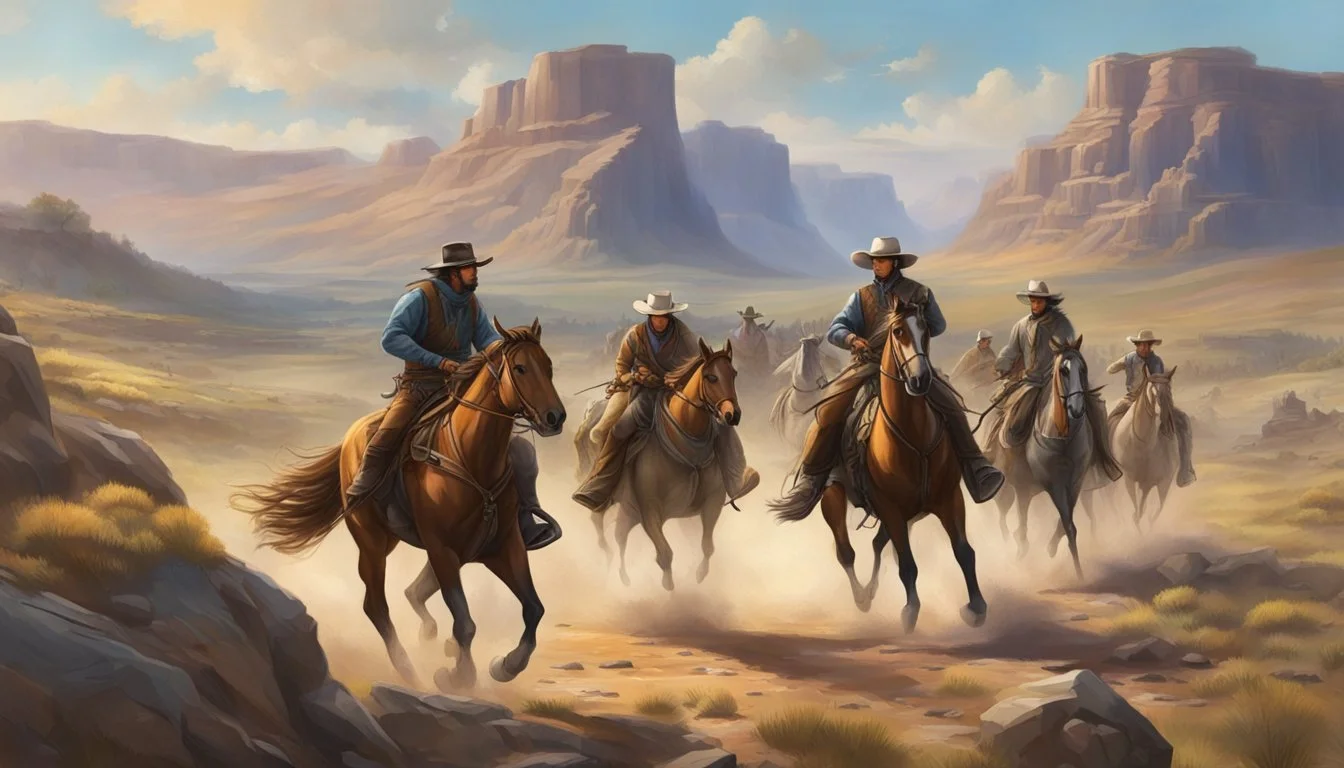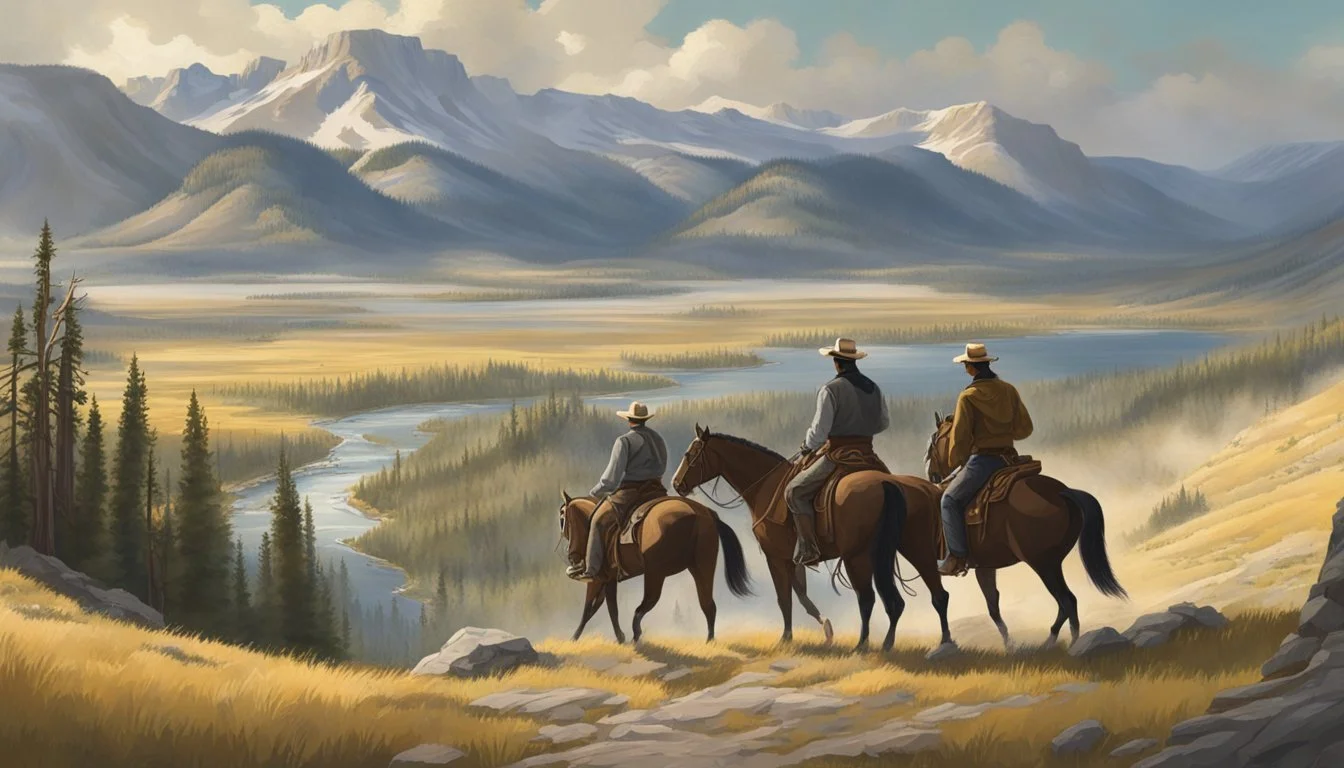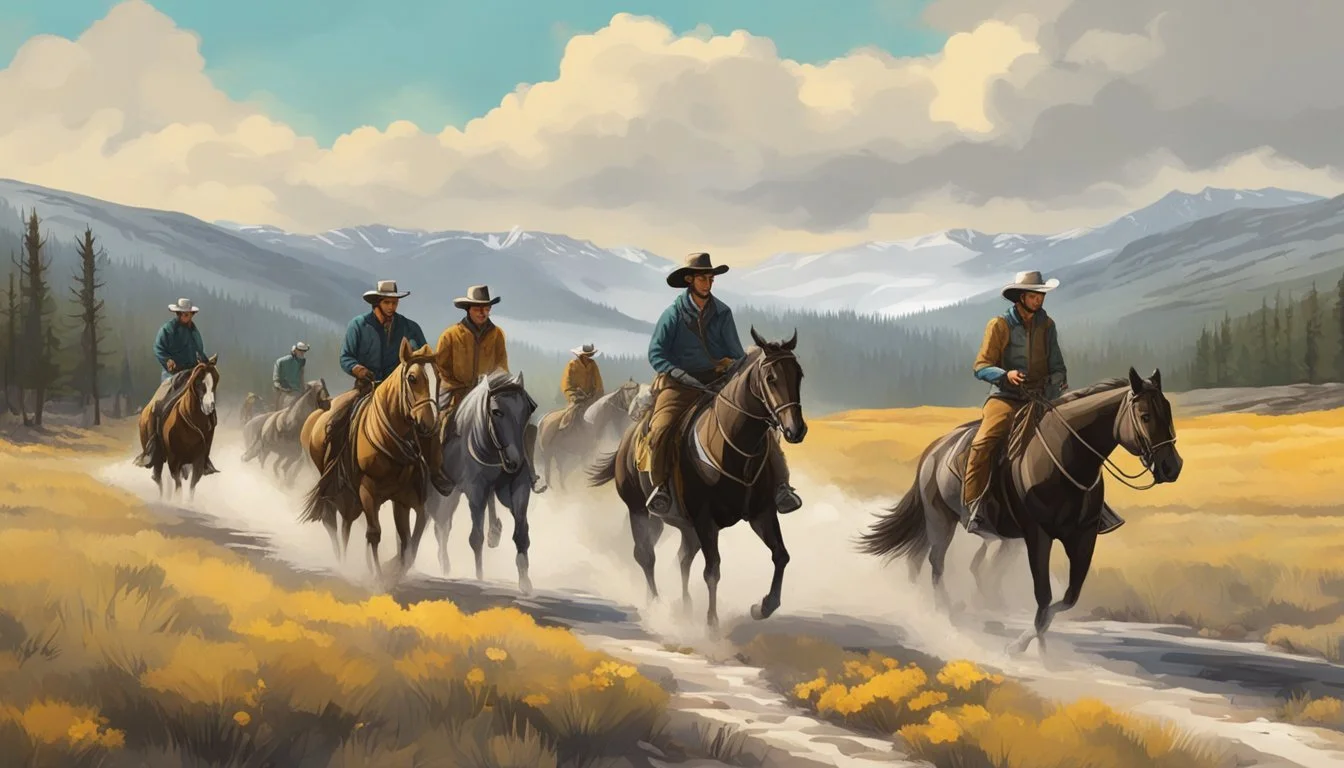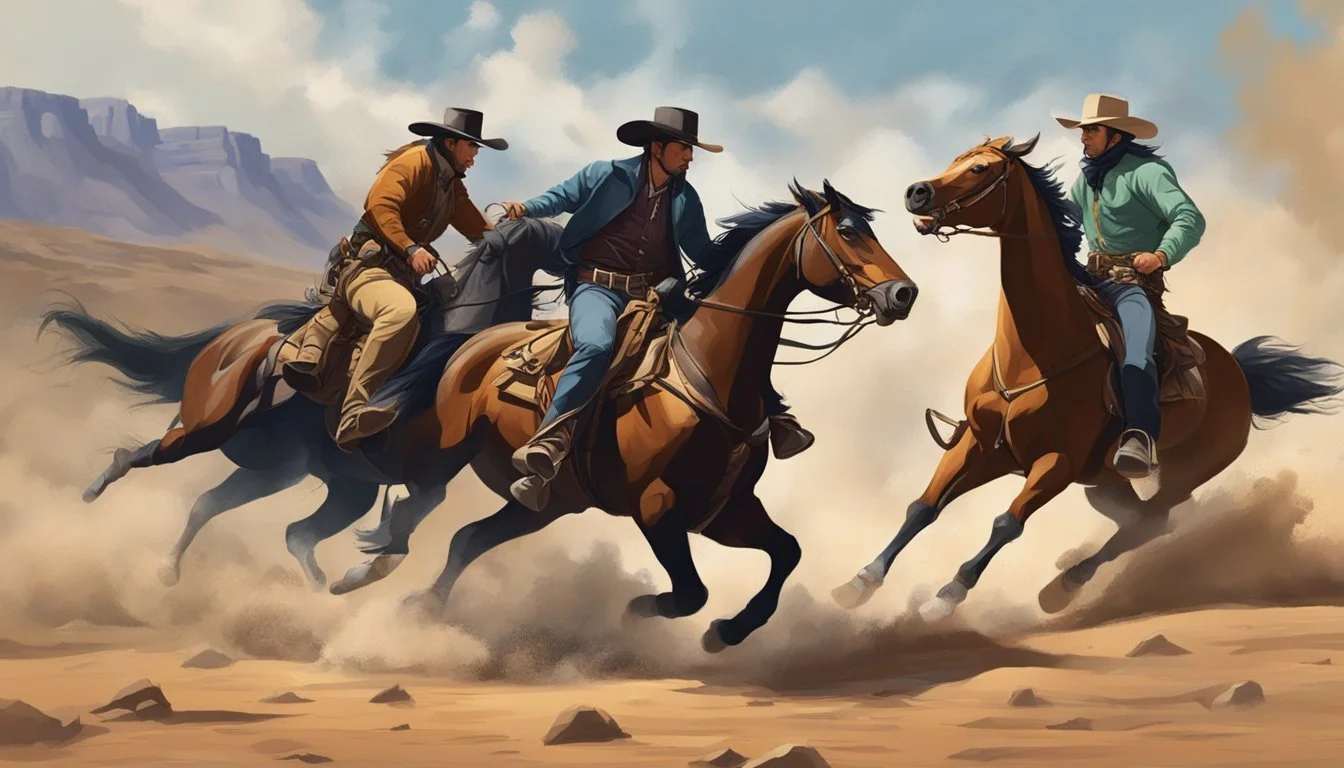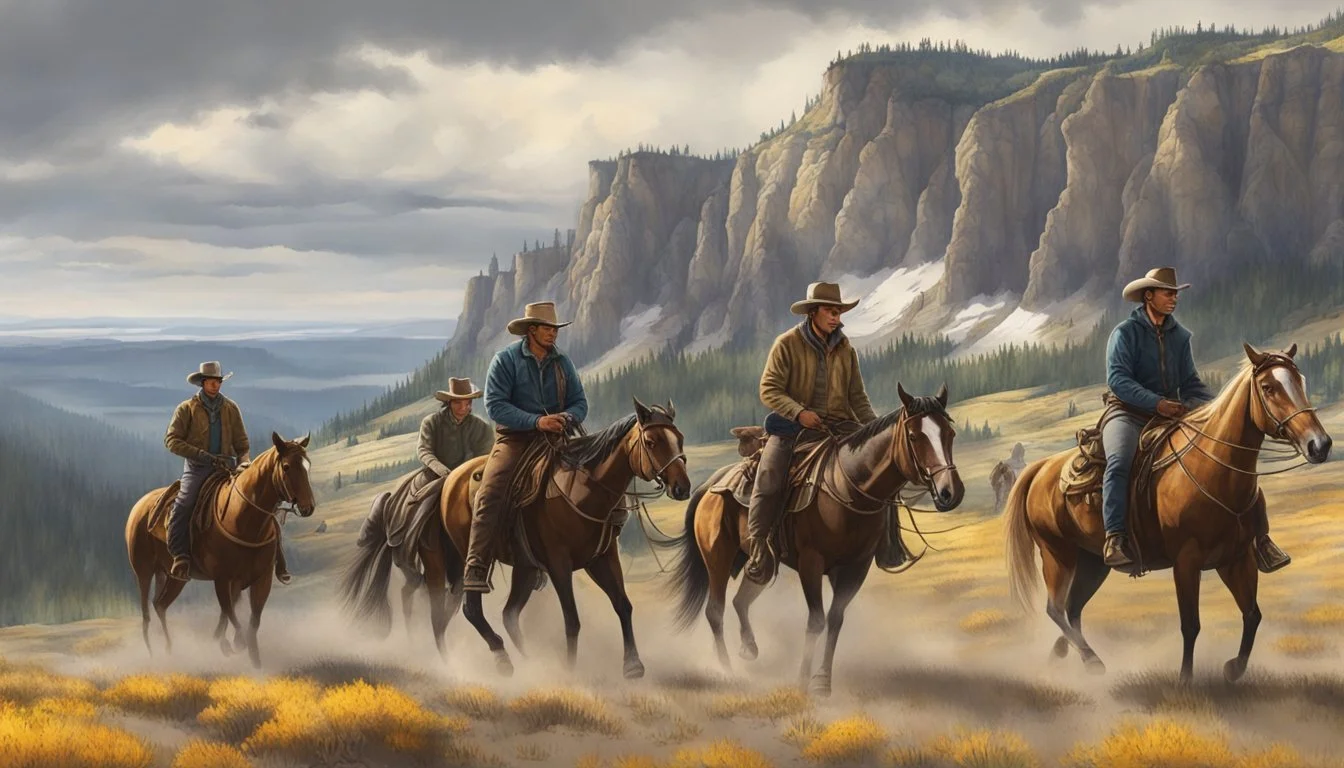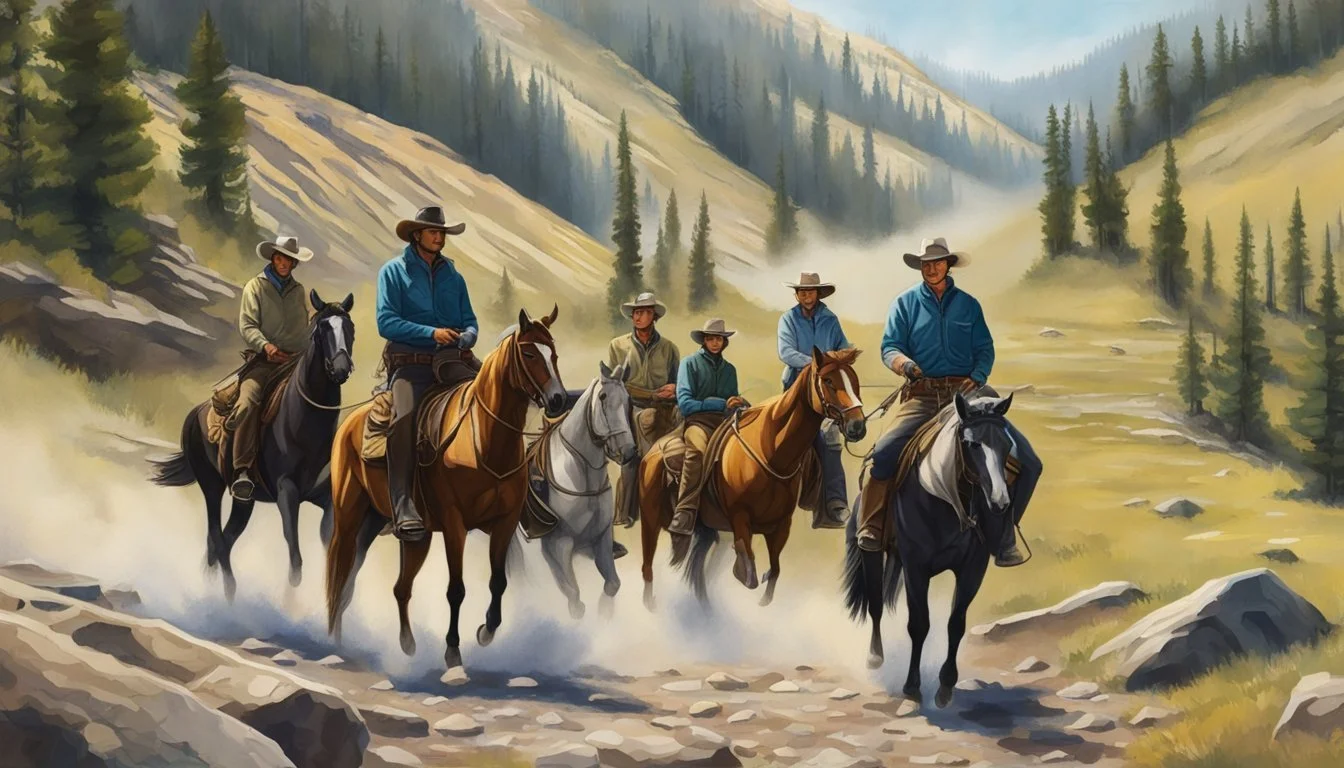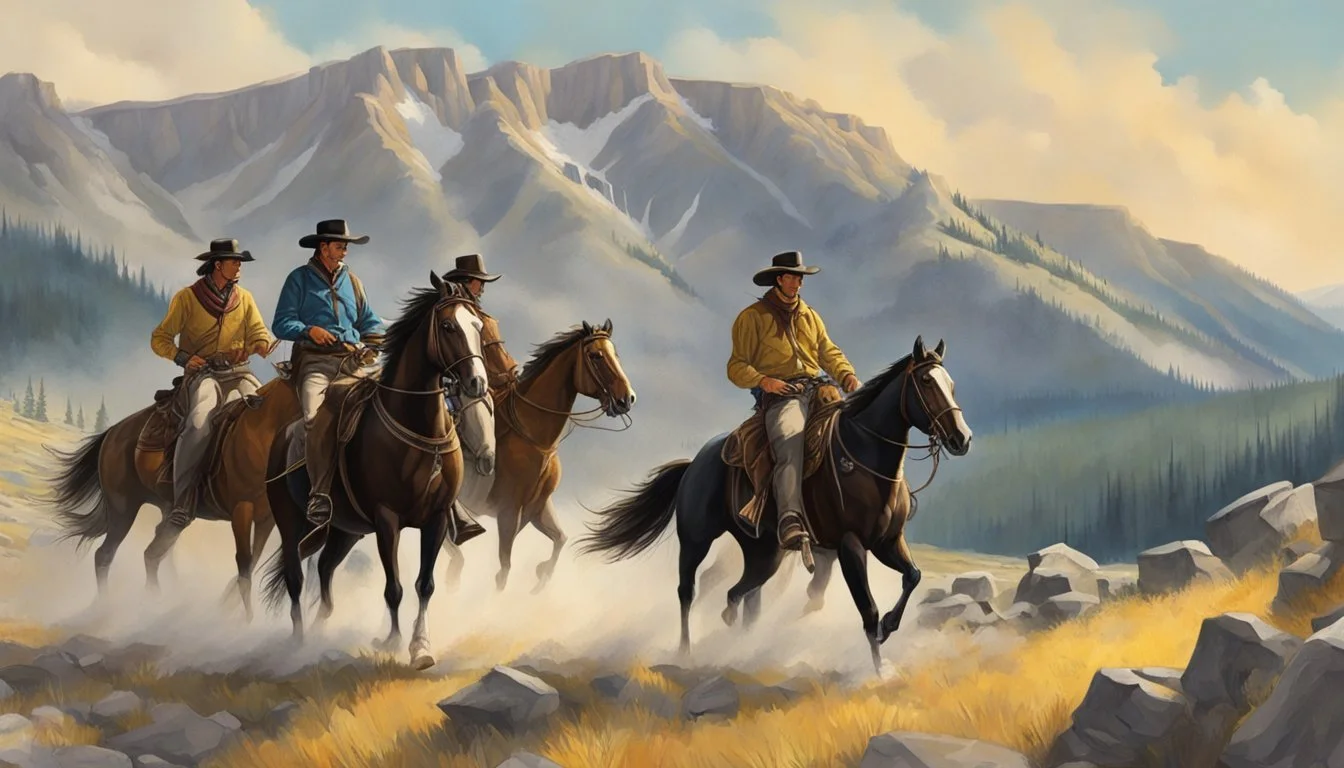Technology vs Tradition: Yellowstone's Epic Battle for the Soul of Ranching
The popular TV series Yellowstone presents a captivating portrayal of modern ranch life in Montana, where traditional cowboy culture meets 21st-century challenges. Set against the backdrop of the sprawling Yellowstone Ranch, the show explores the delicate balance between preserving time-honored practices and embracing technological advancements.
Technology plays a pivotal role in shaping the lives of Yellowstone's characters, influencing everything from ranch management to personal relationships. As the Dutton family strives to protect their legacy, they must navigate the complexities of a rapidly changing world where progress often clashes with tradition.
The show's depiction of this struggle resonates with viewers, offering a glimpse into the evolving nature of ranching and cowboy culture in contemporary America. By examining the intersection of technology and tradition, Yellowstone raises important questions about the future of rural life and the preservation of cultural heritage in an increasingly digital age.
Historical Context of Yellowstone
Yellowstone's rich history spans from its founding as the world's first national park to its role in shaping the American West. The park's establishment and early years set the stage for conservation efforts, while the surrounding region's development influenced its evolving identity.
Founding of Yellowstone and Early Years
Yellowstone National Park was established on March 1, 1872, by President Ulysses S. Grant. This groundbreaking legislation protected over 2 million acres of wilderness, creating a precedent for conservation worldwide. Early visitors faced challenging conditions, with limited accommodations and transportation options.
The Northern Pacific Railroad reached the park in 1883, making it more accessible to tourists. This influx of visitors led to the construction of iconic lodges and the development of infrastructure within the park. By 1923, Yellowstone had welcomed its millionth visitor, marking a significant milestone in its popularity.
The Impact of the American West on Yellowstone
The American West's rapid development in the late 19th and early 20th centuries significantly influenced Yellowstone's role in the region. As nearby areas experienced ranching booms and resource extraction, the park became a symbol of untouched wilderness.
The Great Depression era brought new challenges and opportunities. The Civilian Conservation Corps worked on numerous projects within Yellowstone, improving trails, buildings, and campgrounds. This period also saw increased efforts to balance conservation with public access.
Yellowstone's history reflects broader trends in American society, from westward expansion to changing attitudes towards nature and conservation. The park's evolution mirrors the complex relationship between progress and tradition in the American West.
Tradition in Yellowstone
Yellowstone portrays the rich cultural heritage and traditional practices that define ranching life in Montana. The show highlights the struggle to maintain time-honored customs in the face of modernization and external pressures.
Cultural Identity and Heritage
The series showcases the deep-rooted cultural identity of ranching families in the American West. Characters embody traditional values like hard work, loyalty, and respect for the land. Cowboy culture is prominently featured through clothing, language, and daily routines.
Ranch gatherings and events serve as vehicles for passing down oral histories and reinforcing community bonds. The show depicts traditional skills like horseback riding, roping, and animal husbandry as integral parts of ranch life.
Cultural practices like branding ceremonies carry both practical and symbolic significance. These rituals reinforce family ties and ranch ownership while connecting current generations to their ancestors.
Traditional Ranching and Land Practices
Yellowstone highlights various traditional ranching methods still employed on modern cattle operations. Characters engage in time-honored practices such as cattle drives, branding, and natural horsemanship.
The show emphasizes the importance of land stewardship and sustainable grazing practices. Ranchers are portrayed as guardians of the landscape, working in harmony with natural cycles and wildlife.
Traditional fence mending, predator management, and seasonal routines are depicted as essential to maintaining the ranch. The series also showcases the physical demands and problem-solving skills required in day-to-day ranch operations.
The Dutton Ranch Legacy
The Dutton family's multi-generational ownership of their ranch is central to the show's exploration of tradition. The patriarch, John Dutton, embodies the role of a traditional ranch owner fighting to preserve his family's legacy.
Yellowstone illustrates the complex dynamics of passing down a working ranch through generations. Characters grapple with balancing personal ambitions against family obligations and the weight of tradition.
The ranch itself serves as a symbol of continuity and resistance against change. Its vast acreage and natural beauty represent the enduring appeal of the traditional ranching lifestyle in the modern world.
Modernization in Yellowstone
Yellowstone faces rapid modernization as technology, urban expansion, and global tourism reshape the iconic landscape. These forces bring both opportunities and challenges to the region's traditional way of life.
Technological Advancements in Ranching
Modern ranching in Yellowstone incorporates cutting-edge technologies to improve efficiency and sustainability. GPS-enabled livestock tracking systems allow ranchers to monitor herd movements and health remotely. Drones assist in surveying vast territories and identifying problem areas quickly. Advanced irrigation systems optimize water usage, crucial in the region's arid climate.
Precision agriculture techniques, using data analytics and satellite imagery, help ranchers make informed decisions about grazing patterns and crop management. These innovations increase productivity while reducing environmental impact. However, the high costs of implementation can be a barrier for smaller operations.
Urban Expansion and Land Use Policies
The Yellowstone area grapples with growing urban centers and changing land use patterns. Cities like Bozeman and Jackson Hole experience rapid population growth, leading to increased housing developments and infrastructure projects. This expansion puts pressure on adjacent wildlands and ranching territories.
Land use policies aim to balance development needs with conservation efforts. Zoning regulations, conservation easements, and wildlife corridors help protect critical habitats and maintain open spaces. Some ranchers participate in agritourism initiatives, diversifying their income while preserving traditional landscapes.
The challenge lies in managing growth without compromising the region's natural beauty and ecological integrity.
Influence of Social Media and Global Tourism
Social media platforms have transformed Yellowstone into a global tourist destination. Instagram-worthy locations draw visitors from around the world, boosting the local economy but also straining resources. Park authorities use social media to educate visitors about responsible tourism and wildlife safety.
Virtual reality tours and live webcams offer new ways to experience Yellowstone remotely. These technologies increase accessibility and awareness but may impact in-person visitation patterns. Local businesses adapt by offering unique, authentic experiences that can't be replicated online.
The influx of tourists creates job opportunities but also raises concerns about overtourism and its effects on the delicate ecosystem. Balancing promotion with preservation remains an ongoing challenge for Yellowstone's stakeholders.
Struggle over Land and Power
Land ownership and control form the core of Yellowstone's central conflicts. The series portrays complex power dynamics between ranchers, developers, and Native American tribes, each vying for their stake in Montana's valuable terrain.
Land Ownership and Rights Dynamics
The Dutton family, led by patriarch John Dutton (Kevin Costner), fiercely defends their vast Yellowstone Ranch. Their struggle symbolizes the broader tension between traditional ranching and modern development pressures.
Beth Dutton, John's daughter, plays a crucial role in protecting family interests. Her financial expertise and ruthless tactics often clash with those seeking to acquire or develop Dutton land.
Water rights emerge as a critical issue. Access to water sources can make or break a ranch's viability, leading to intense competition and legal battles.
Native American Tribes and Historical Treaties
Thomas Rainwater, leader of the fictional Broken Rock Reservation, challenges the Duttons' claim to their ancestral lands. His efforts highlight the complex history of Native American land rights in the region.
The Fort Laramie Treaty of 1868 serves as a pivotal historical reference. This real treaty between the U.S. government and Native American tribes continues to impact modern land disputes.
Yellowstone explores how historical injustices shape current conflicts. It portrays Native communities fighting to reclaim lands and preserve their cultural heritage.
Land Disputes and Economic Pressures
Developers and corporations view Montana's landscape as an untapped resource. Their pursuit of profit through land acquisition and development threatens traditional ways of life.
Tourism and recreational industries exert growing influence. The allure of Montana's natural beauty creates new economic opportunities while potentially disrupting established communities.
Environmental concerns add another layer to land disputes. Conservation efforts sometimes clash with both development plans and traditional ranching practices, creating complex three-way conflicts.
Conservation and Environmental Responsibilities
Yellowstone National Park faces complex challenges in balancing conservation efforts with development pressures. Technology plays a crucial role in monitoring and protecting the park's delicate ecosystem while enabling sustainable management practices.
Protecting Yellowstone's Ecosystem
Advanced monitoring systems track wildlife populations and habitat health in Yellowstone. GPS collars on wolves and grizzly bears provide real-time data on animal movements and behavior. Remote sensing technologies assess vegetation changes and identify areas at risk of invasive species spread.
Park rangers use mobile apps to report and respond to environmental issues quickly. Drones assist in mapping hard-to-reach areas and detecting wildfires early. These tools help staff make informed decisions about resource management and visitor access.
Visitor education programs incorporate interactive displays and virtual reality experiences. These technologies engage tourists in conservation topics without disturbing sensitive habitats.
Sustainable Land Management and Conservation Easements
Geographic Information Systems (GIS) enable precise mapping of Yellowstone's diverse landscapes. This data informs land use decisions and helps identify critical areas for protection.
Conservation easements utilize digital platforms to streamline agreements between landowners and conservation organizations. These tools simplify the process of preserving private lands adjacent to the park, creating wildlife corridors and buffer zones.
Ranchers near Yellowstone adopt precision agriculture techniques. GPS-guided equipment reduces overgrazing and minimizes soil erosion. Satellite imagery helps optimize irrigation, conserving water resources.
Challenges of Climate Change and Habitat Fragmentation
Climate models predict significant changes to Yellowstone's ecosystems. Scientists use supercomputers to simulate future scenarios and develop adaptation strategies.
Thermal imaging cameras monitor geothermal features, tracking changes that may indicate shifts in underground heat patterns. This data helps predict potential impacts on wildlife and vegetation.
GPS tracking of migratory species reveals how habitat fragmentation affects animal movement patterns. This information guides efforts to maintain and restore wildlife corridors.
Acoustic monitoring devices detect changes in bird populations and other indicator species. These tools provide early warnings of ecosystem stress due to climate change or human activity.
Culture and Family Dynamics in Yellowstone
The Dutton family's complex relationships and dedication to their ranch shape the cultural landscape of Yellowstone. Their struggle to preserve tradition while facing modern economic pressures creates compelling drama.
Dutton Family and Relationships
John Dutton leads the Dutton clan with an iron will. His children - Beth, Jamie, and Kayce - navigate complicated bonds. Beth's sharp wit and business acumen make her a formidable ally and enemy. Her relationship with ranch hand Rip Wheeler adds depth to her character.
Jamie's ambition often clashes with family loyalty. Kayce balances his roles as a father, husband, and rancher. The Duttons' interactions reveal deep-seated issues of trust, power, and legacy.
Family loyalty is paramount, often superseding personal desires or ethics. This devotion to the Dutton name drives much of the series' conflict and character development.
Ranching, Loyalty, and Economic Survival
The Yellowstone Ranch represents more than land - it embodies a way of life. The Duttons fight to preserve their ranching heritage against encroaching development and changing economic realities.
Loyalty among ranch hands is crucial. Rip Wheeler exemplifies this devotion, serving as John's right-hand man and enforcer. The bunkhouse culture showcases the camaraderie and hierarchy among cowboys.
Economic pressures threaten traditional ranching. The Duttons employ both time-honored methods and modern tactics to maintain their holdings. This struggle highlights the cultural clash between rural values and urban expansion in Montana.
The ranch's survival often requires morally ambiguous choices, testing the limits of family loyalty and cultural identity.
Yellowstone and Popular Media
Yellowstone has become a cultural phenomenon since its debut on the Paramount Network in 2018. The series, created by Taylor Sheridan, explores the complex interplay between tradition and progress in modern ranch life.
Kevin Costner stars as John Dutton, the patriarch of a powerful ranching family in Montana. His compelling performance anchors the show's exploration of land disputes, family dynamics, and political intrigue.
The series has gained a dedicated following, sparking discussions about contemporary Western issues. It has influenced fashion trends and boosted tourism to Montana, demonstrating its impact beyond entertainment.
Yellowstone's success has led to spin-offs and prequels, expanding its narrative universe. The show's popularity has reignited interest in Western dramas and rural American stories.
Taylor Sheridan's previous work on films like Sicario and Hell or High Water prepared him to tackle complex themes in Yellowstone. The show's nuanced portrayal of characters, including those played by Kelly Reilly and Wes Bentley, adds depth to its storytelling.
Yellowstone's portrayal of technology's role in modern ranching has resonated with viewers. It showcases how traditional practices adapt to 21st-century realities while maintaining core values.
The series has sparked conversations about land management, conservation, and Native American issues. Its wide-ranging impact underscores the power of television to shape public discourse and cultural perceptions.

